Did you know there are plants that grow in water? In fact, there’s a lot of them! If you’ve started your plant collection and want to add a few more, why not try one of these? They’re great for beginners and experts alike.
We bring you the top variety of plants that grow in water. What’s more?
We’ve even included is a comprehensive guide that will equip you with the details regarding the containers you will need and how to care for your water-plant.
Table of Contents
Why Buy Plants That Grow In Water?
Plants that grow in water are not just aesthetically pleasing but are far easier to maintain. They need less care because you don’t have to worry about watering them on schedule. Also, were you worried about pests infesting your beautiful plants?
No more.
This is because the pests will have no soil to lay their eggs. No soil, no problem.
Types Of Plants That Grow In Water
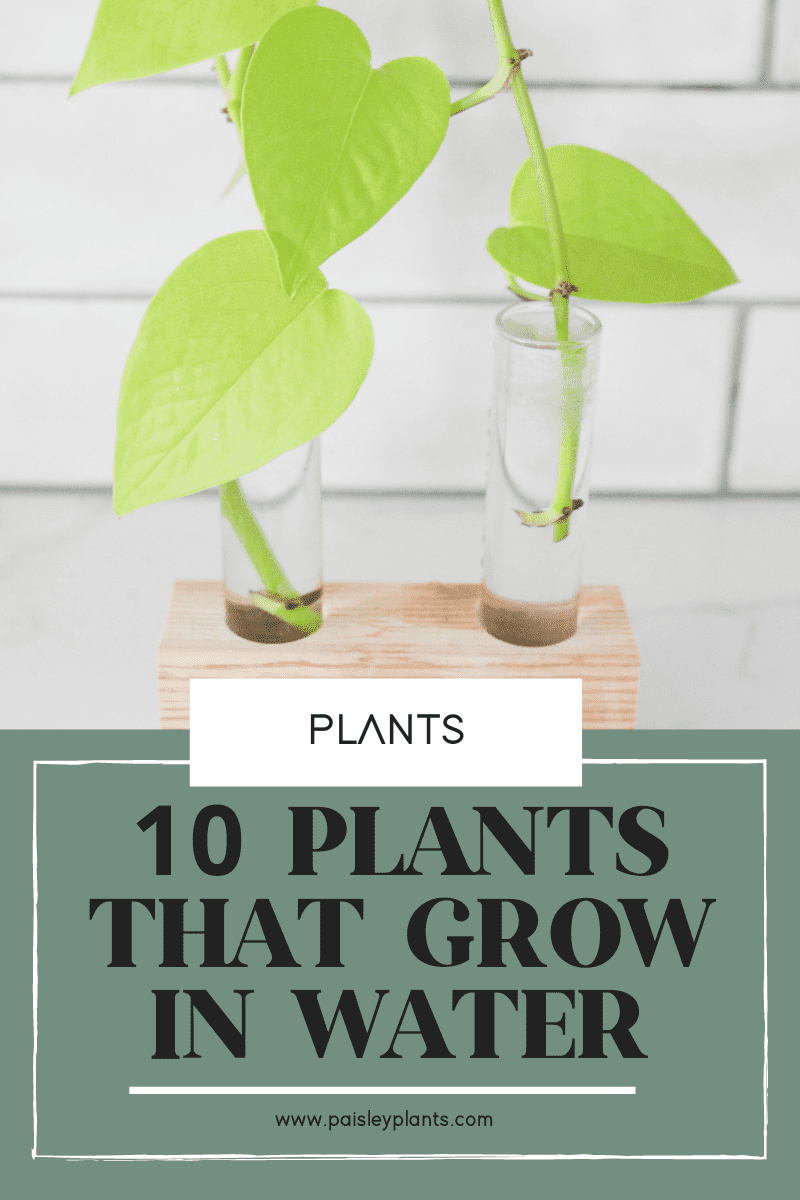
Paisley Plants is a participant in the Amazon Services LLC Associates Program, an affiliate advertising program designed to provide a means for sites to earn advertising fees by advertising and linking to Amazon.com. This post may include affiliate links which means I may earn a small commission if you shop using the links below at no additional cost to you.
Still unsure if the water-plants are for you?
You will not be after going over these beautiful varieties of plants.
1. Rubber Plant
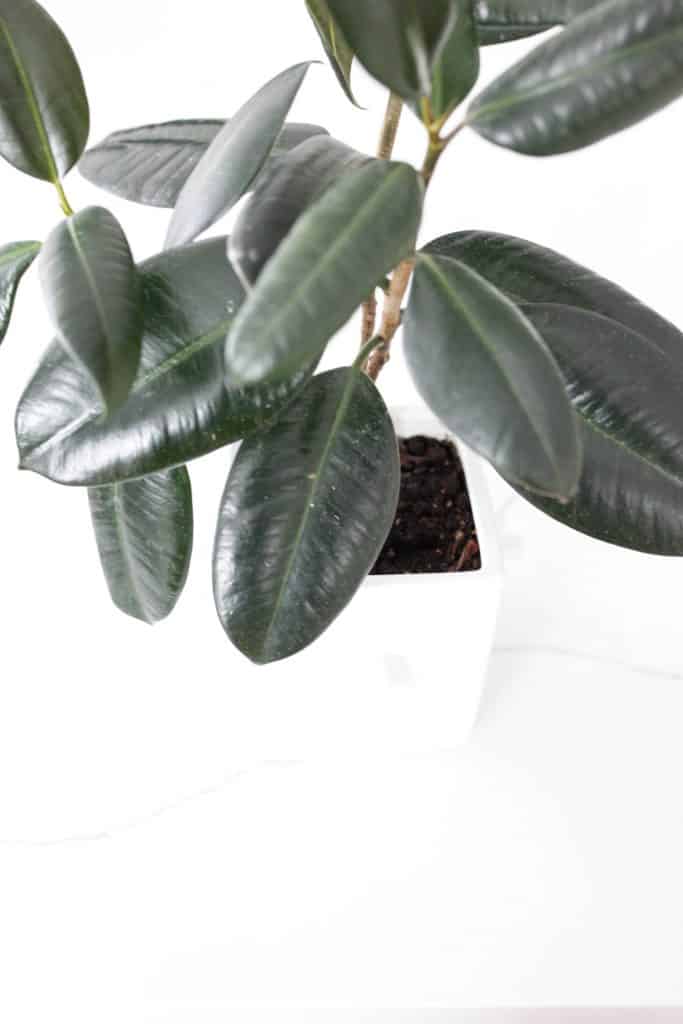
Rubber plants, scientifically known as Ficus Elastica, have beautiful, enormous, pliant, green leaves. The leaves are supported by a thick and long stem that can reach 10 feet of height if you keep the plant in the optimum environment.
Care Tips
The plant is relatively easy to maintain. For ideal results, you should keep it in bright indirect light. Special care is needed during propagation. Six to eight-inch of the stem should be cut and placed in water; the roots will emerge within three to four months.
READ: Rubber Plant Care + Growing Tips
2. Chinese Evergreen
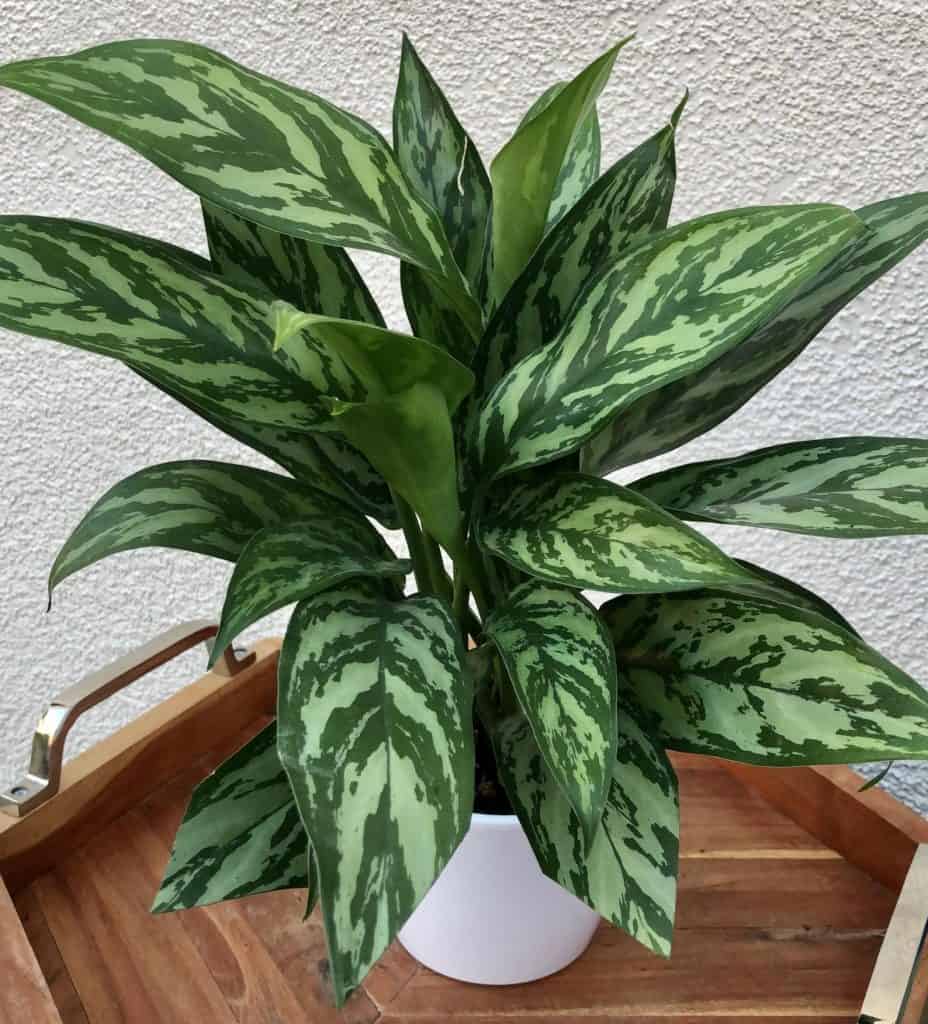
Photo via Home Plant Inspiration
Chinese Evergreen is scientifically known as Aglaonema Dieffenbachia.
The Chinese evergreen is an untroubled plant because it can survive neglect and low light conditions. This plant is ideal for you if (ahem) you can’t be bothered with too much care.
But, don’t underestimate this plant just because it does not need much care.
The plant can produce waxy leaves in Green, yellow, pink, white, red colors with unique variegated patterns. This plant will give your office/dorm rooms an element of elegance.
Care Tips
This plant will give the most beautiful variegated pattern if it gets sufficient sunlight. However, you should keep the plant away from direct sunlight as it will cause the leaves to fall.
Read More: Growing Your Chinese Evergreen Plant
3. English Ivy
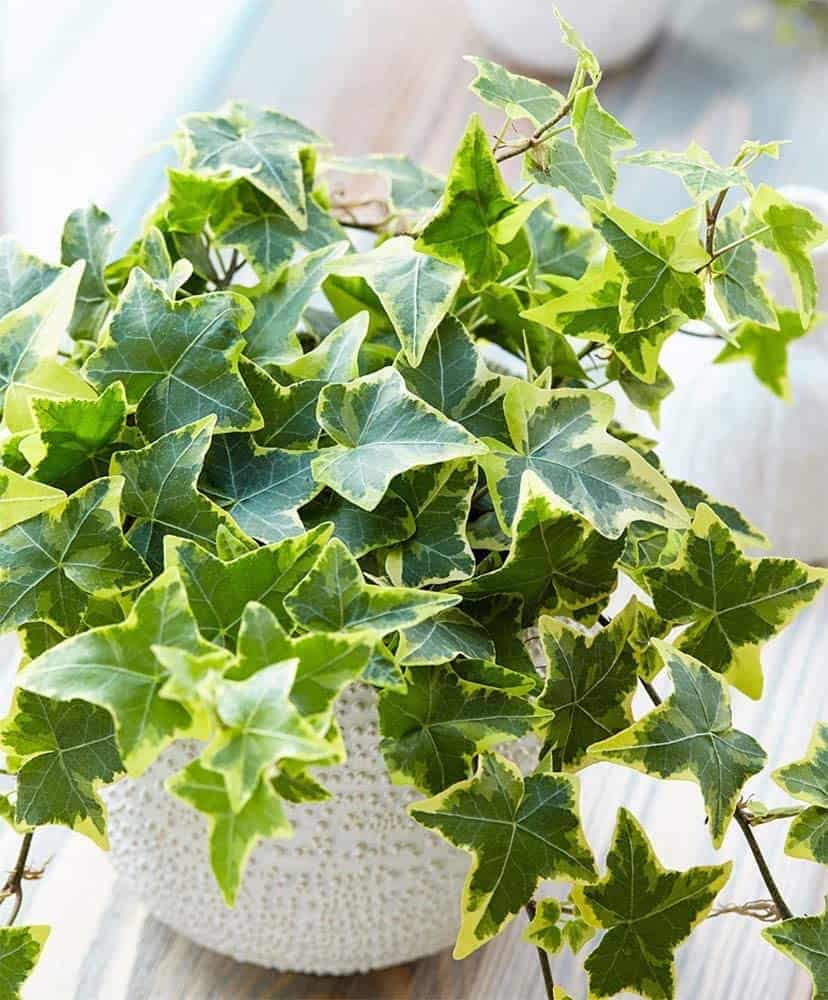
English ivy, scientifically known as Hedera helix, is a relatively easy to grow plant. It is also at times referred to as the climbing plant because of its invasive properties.
Don’t be creeped out; you have got it all wrong.
The plant takes a lot of space, and it can cover your walls and gardens, but giving them an aesthetically pleasing outlook. The variegated patterns are no less satisfying.
Care Tips
You can not go wrong with this plant if you place it in a large container. Its tolerant nature means that you can set the cuttings in vases for a longer time.
Read More: How to Propagate English Ivy
4. Pothos
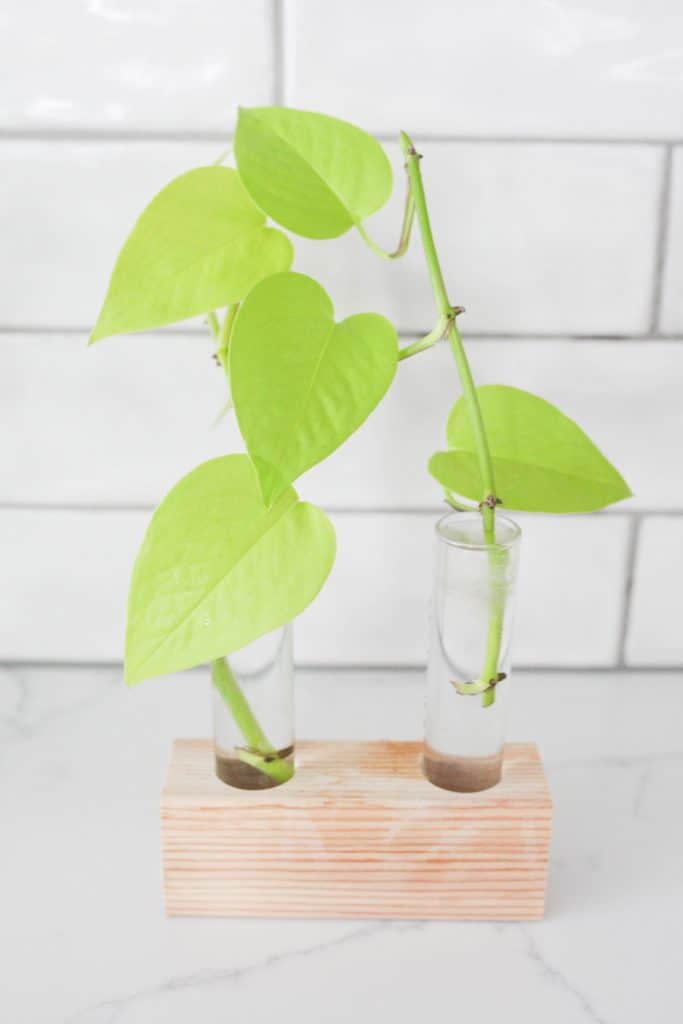
It’s risky putting this plant here because you might overlook all the other plants due to its unique glossy, heart-shaped leafage.
What’s more?
Mount the container on a wall or a shelf and watch the gracefully variegated leaves cascade down in pure essence. Pothos is a ninja, will climb vertically if given moss to climb on. Are you interested in more pothos plant varieties?
Care Tips
Change the water every week to maintain the correct oxygen levels, and the plant will keep impressing you with its wonder. Simple right?
READ:
5. Dumb Cane
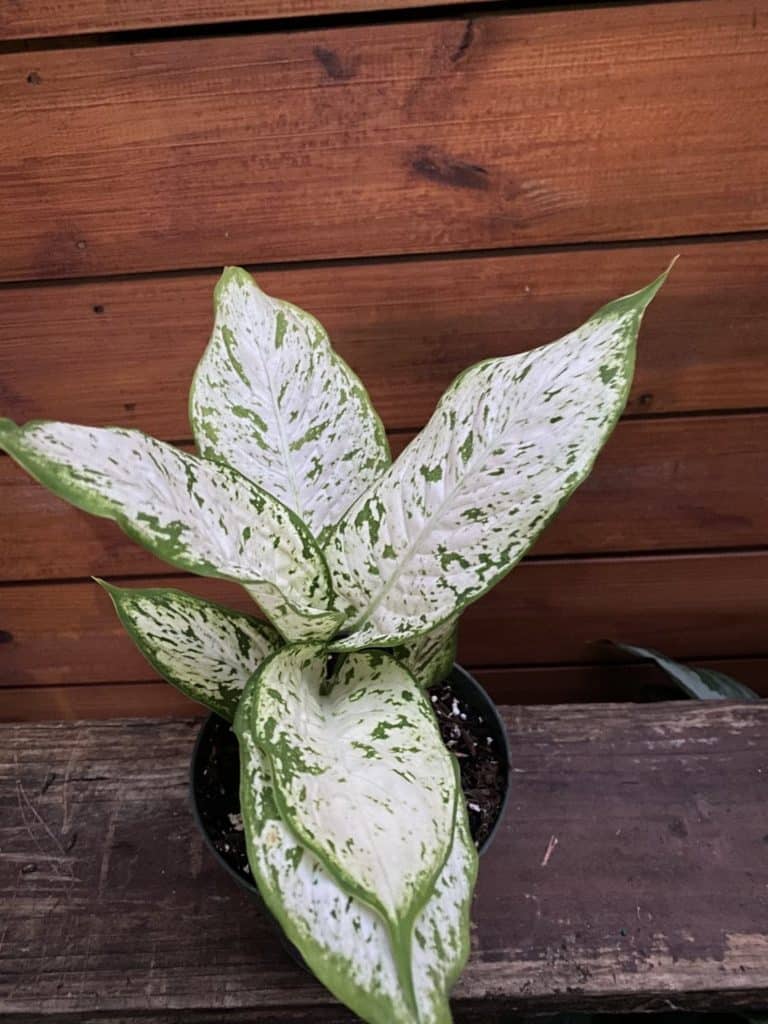
Image via Tropical Plants FL on etsy
Dumb cane is also known as Dieffenbachia species.
With its large, uniquely variegated leaves, the plant is similar to a rubber plant, and just like Chinese evergreen, it does not require much attention.
Care Tips
This plant requires special care during propagation. You should cut the stem no longer than six-inch. Also, make sure not to let any leaves at the bottom of the stem.
Caution: Wear gloves while clipping the stem as the toxic sap may cause skin irritation.
6. Heartleaf Philodendron
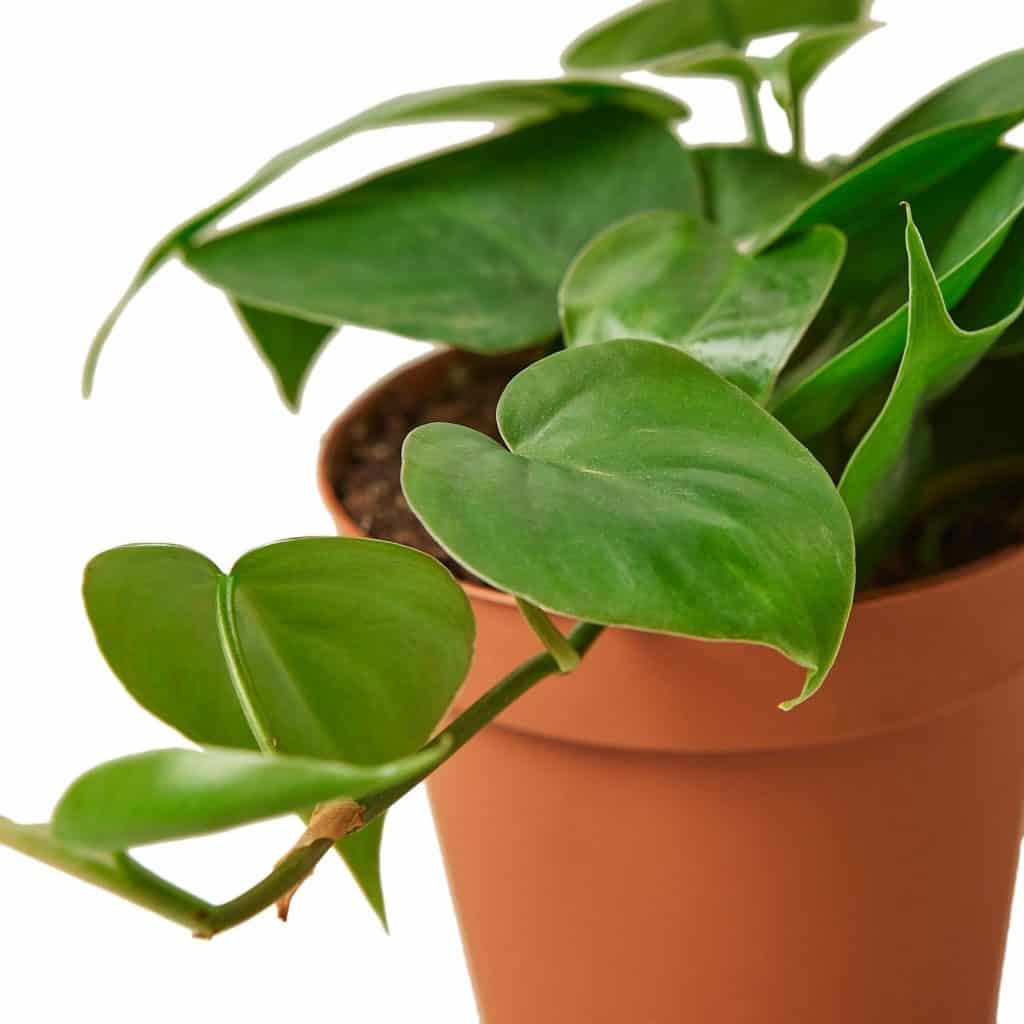
image via Earthy y Children on etsy
Be glad that you kept reading.
With its exquisite, pothos like heart-shaped leaves can cascade down four to five feet. The plant is pretty hardcore and can sustain harsher conditions.
Care Tips
Surprisingly, it’s harder to kill than maintain.
Just cut the edges when the stem exceeds the desired length. Plus, keep the plant away from direct sunlight but do not keep it in a cold room. The temperature of 70 Fahrenheit is suitable.
Bonus tip: add a drop of fertilizer occasionally.
7. Lucky Bamboo
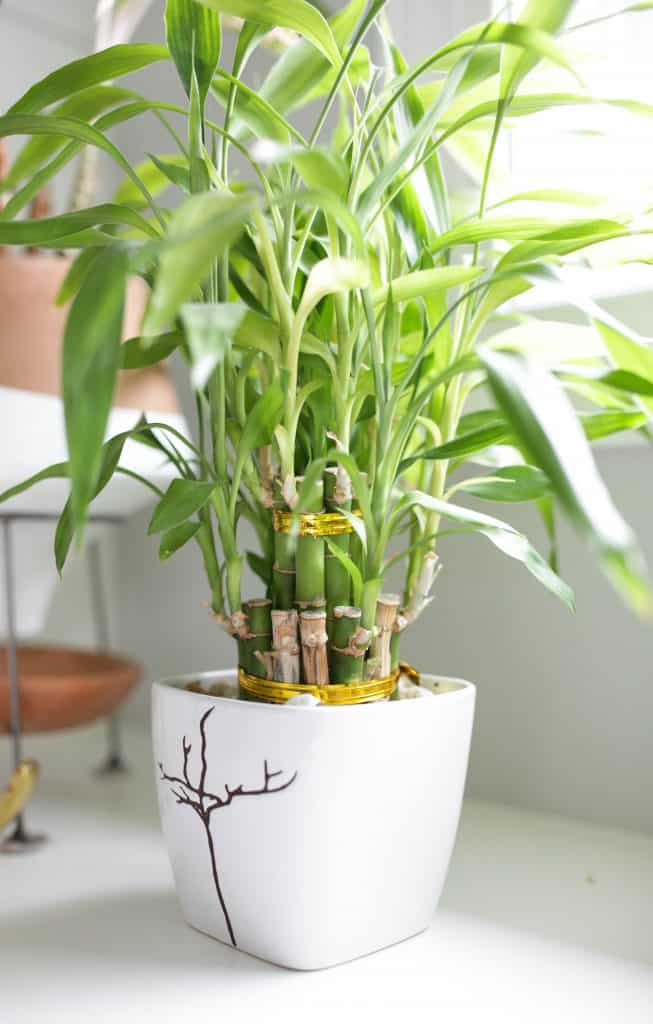
Lucky bamboo grows in a weird spherical manner, usually along with moss. Add rocks to the container for ornamental and support purposes. The plant usually only requires a small but tall vase.
Read More: Lucky Bamboo Care Tips
8. Spider Plant
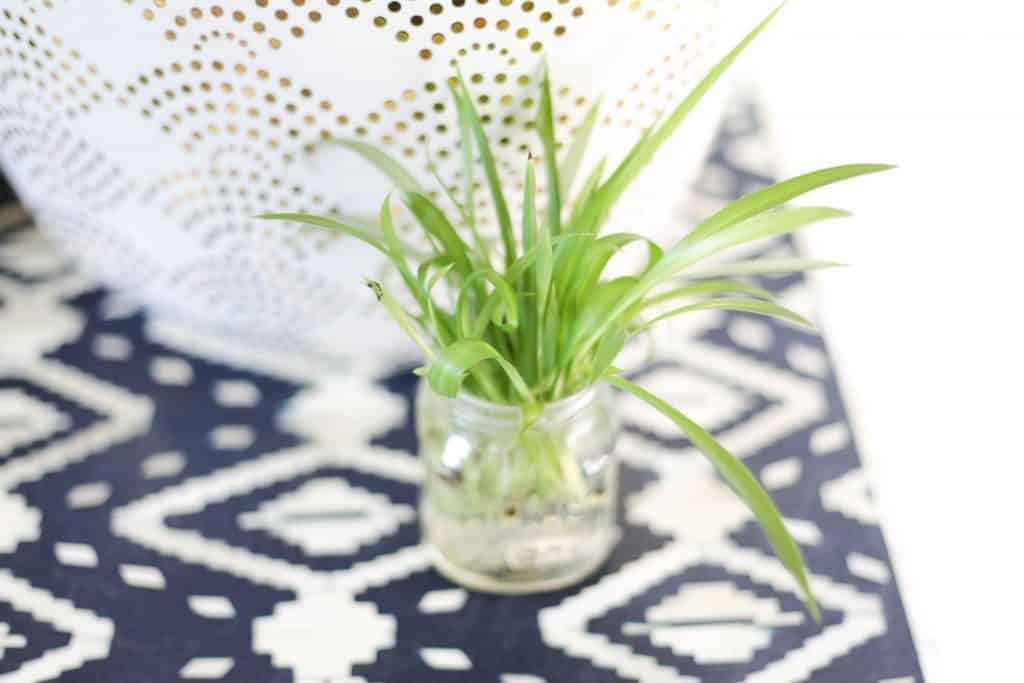
Spider plant, aka Chlorophytum comosum.
The spider plant is a common indoor plant. It has a distinct, narrow, arching, and variegated foliage. This is especially appealing when placed in a window setting.
Interestingly, as the plants mature, they produce ‘pups/babies’ that you can cultivate in separate water containers.
Care Tips
This plant requires some special attention. Keep the plant away from direct sunlight. The water should be changed every two to three days to prevent the plant from rotting.
9. Coleus
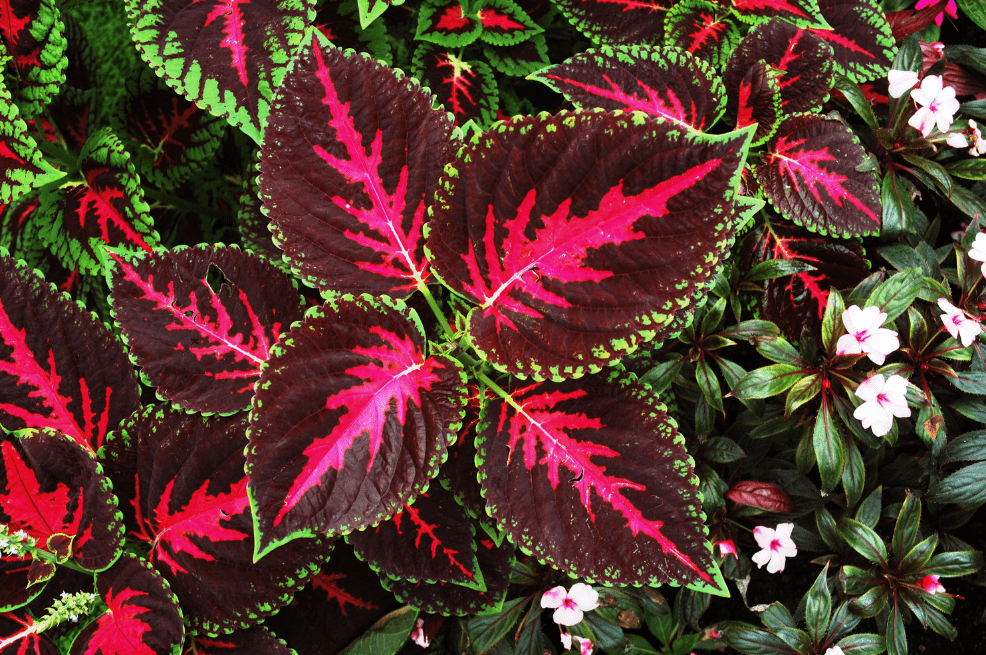
Coleus will, for sure, be the most colorful contribution to your setting. This plant is known for its captivating colors and distinct hexagon foliage. Also, the blood-red color with green borders induces a relaxing effect on your mood.
You can put coleus in a goblet or as a tabletop centerpiece in a decorative vase.
Care Tips
The plant grows best at an average room temperature and in plenty of indirect sunlight.
10. Begonia
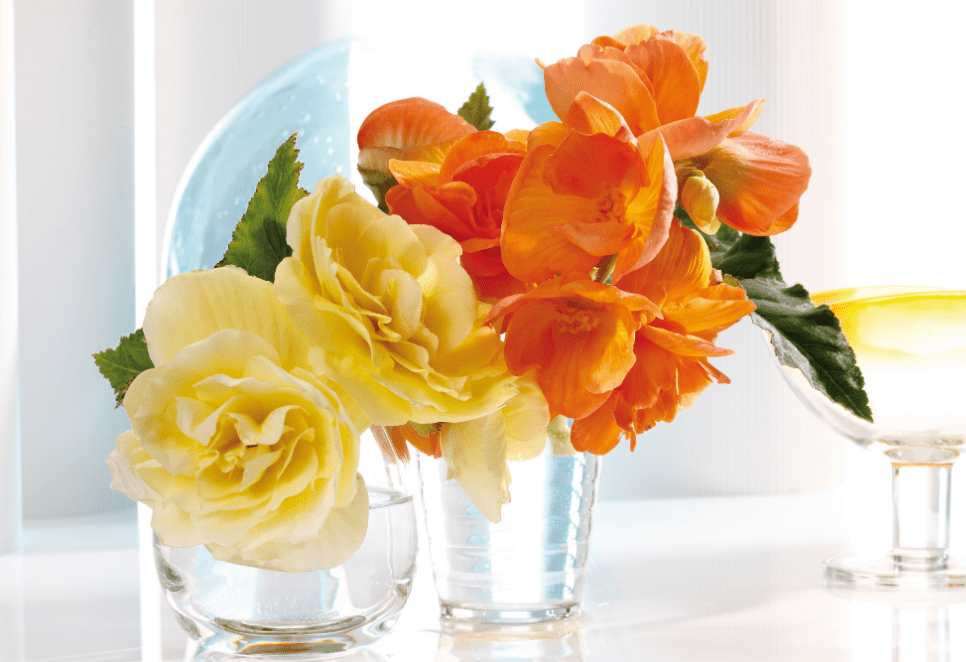
Begonia, with its thick stem, evergreen leaves patterned with traces of pink, red, white, and silver, are one of the most appealing plants that grow in water. Furthermore, the plant’s foliage has a splendid cascading effect where its pinkish-red flowers trail down the container.
The wow factor of this plant is that a single leaf can start a whole new plant.
Care Tips
Begonia is an enticing plant and can maintain its charm with weekly water changes to prevent bacteria growth.
Best Containers For Plants That Grow In Water
Now that you know which plant to buy, up next is the container you will need.
The selection of the container depends primarily on a single factor: the size of the plant.
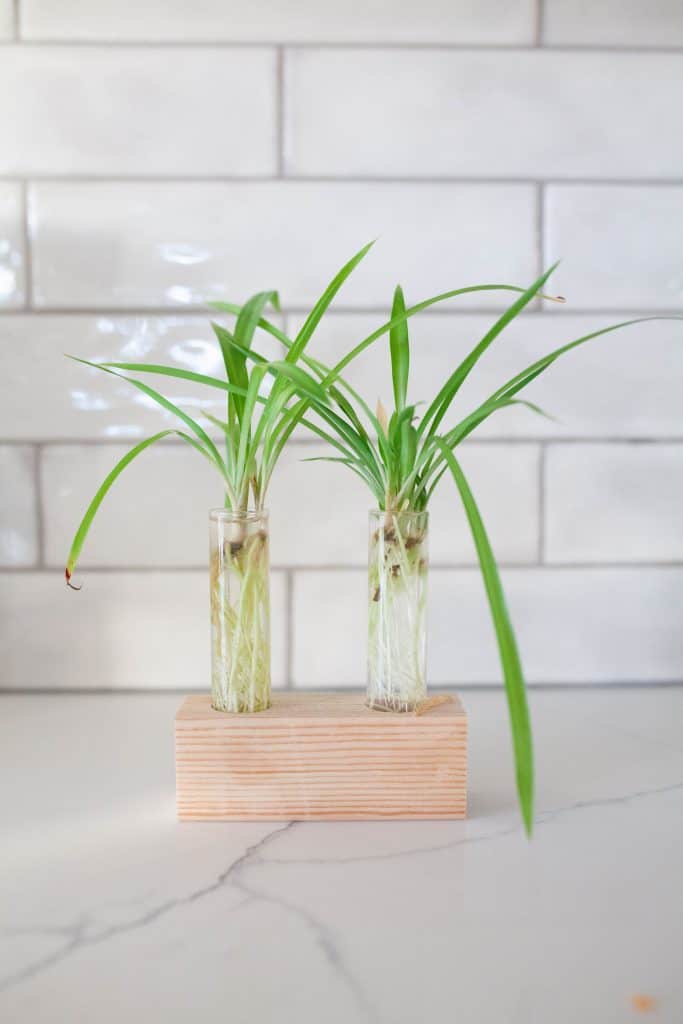
If it’s just a single six-inch stem, you don’t need a fancy vase or a test-tube. A simple glass or jar would work fine. However, you can choose from a variety of propagation stations like the one above to hold your plants!
Once the plant starts growing, you may consider a large transparent container to let the plant grow to its full potential.
How To Care For Plants That Grow In Water
Okay so, you have made your mind upon the perfect container. Here are a few things to keep in mind about a water-plant.
Caring for a plant growing in water is extremely easy. As a general rule, change the water every week to better oxygen regulation for the plant. If the water becomes cloudy in exceptional cases, change it before the plant chokes on carbon dioxide.
Secondly, occasionally add a drop of organic fertilizer to the water to promote growth.
Conclusion
Plants that grow in water are in the league of their own. But, if you are the classic type, you can always shift the plant from water to the pot.
Not that you would ever want to after experiencing the aesthetic of transparent water jars and the stunning, arching display of plant foliage. What are you waiting for?

